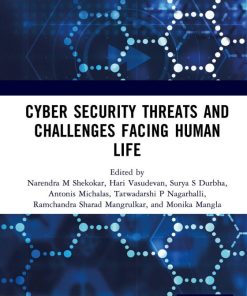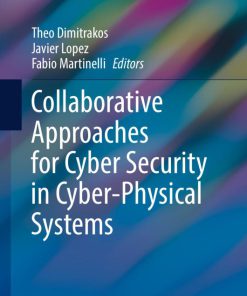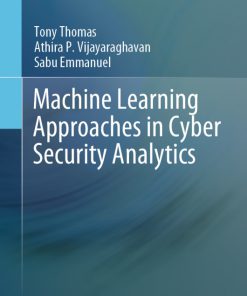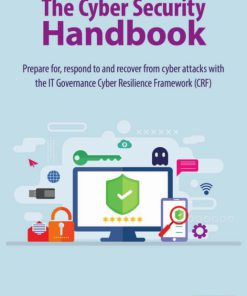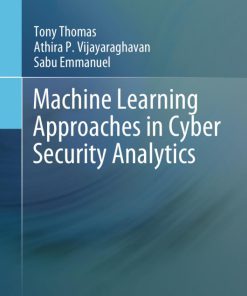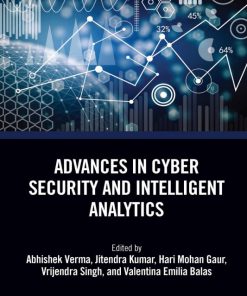Intelligent Approaches to Cyber Security 1st edition by Narendra Shekokar,Hari Vasudevan,Surya Durbha,Antonis Michalas,Tatwadarshi Nagarhalli 9781000961652 1000961656
$50.00 Original price was: $50.00.$25.00Current price is: $25.00.
Authors:Narendra M. Shekokar; Hari Vasudevan; Surya Durbha; Antonis Michalas; Tatwadarshi P. Nagarhalli , Series:Cyberpsychology [13] , Author sort:Shekokar, Narendra M. & Vasudevan, Hari & Durbha, Surya & Michalas, Antonis & Nagarhalli, Tatwadarshi P. , Languages:Languages:eng , Published:Published:Aug 2023 , Publisher:CRC Press , Comments:Comments:Intelligent Approach to Cyber Security provides details on the important cyber security threats and its mitigation and the influence of Machine Learning, Deep Learning and Blockchain technologies in the realm of cyber security.
Intelligent Approaches to Cyber Security 1st edition by Narendra Shekokar,Hari Vasudevan,Surya Durbha,Antonis Michalas,Tatwadarshi Nagarhalli – Ebook PDF Instant Download/Delivery.9781000961652,1000961656
Full download Intelligent Approaches to Cyber Security 1st edition after payment
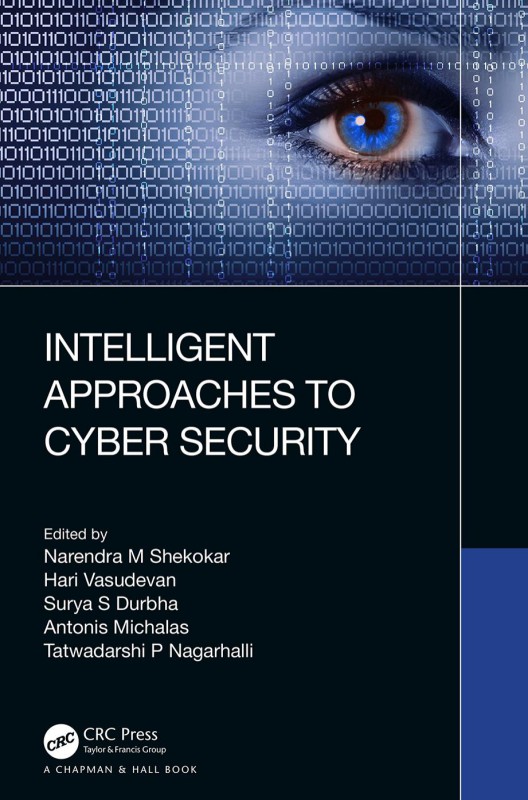
Product details:
ISBN 10:1000961656
ISBN 13:9781000961652
Author:Narendra Shekokar,Hari Vasudevan,Surya Durbha,Antonis Michalas,Tatwadarshi Nagarhalli
Intelligent Approach to Cyber Security provides details on the important cyber security threats and its mitigation and the influence of Machine Learning, Deep Learning and Blockchain technologies in the realm of cyber security. Features: Role of Deep Learning and Machine Learning in the Field of Cyber Security Using ML to defend against cyber-attacks Using DL to defend against cyber-attacks Using blockchain to defend against cyber-attacks This reference text will be useful for students and researchers interested and working in future cyber security issues in the light of emerging technology in the cyber world.
Intelligent Approaches to Cyber Security 1st Table of contents:
Section I Introduction to Machine Learning in Cyber Security
1 Introduction and Importance of Machine Learning Techniques in Cyber Security
1.1 Introduction
1.2 Importance of ML Techniques in Cyber Security
1.2.1 Common Vulnerabilities
1.2.2 Assets That Need to Be Protected
1.2.3 Role of Machine Learning in Cyber Security
1.3 Stages of a Cyber-Attack
1.4 Conclusion
References
2 Review of Machine Learning Approaches in the Field of Healthcare
2.1 Introduction
2.2 Machine Learning Algorithms
2.3 Machine Learning Models
2.4 Disease Detection Using ML
2.4.1 Thyroid Disease
2.4.2 Heart Disease
2.4.3 Breast Cancer
2.4.4 Diabetes
2.4.5 Voice Disorder
2.5 Security in Machine Learning/Deep Learning (ML/DL) for Healthcare
2.6 Security of ML
2.6.1 Security Threats
2.7 Conclusion and Future Scope
References
3 Scope of Machine Learning and Blockchain in Cyber Security
3.1 Introduction
3.2 Machine Learning for Cyber Security
3.2.1 Threat Model for ML
3.3 Blockchain for Cyber Security
3.3.1 Threat Model for Blockchain
3.4 Proposed Approach
3.5 Conclusion and Future Work
References
Section II Defending Against Cyber Attack Using Machine Learning
4 Detection of Spear Phishing Using Natural Language Processing
4.1 Introduction
4.2 Literature Review
4.3 Dataset
4.4 Data Preprocessing
4.5 Textual Anomaly Detection System
4.5.1 Style Detection
4.6 Experimentation and Results
4.7 Future Applications
4.8 Conclusion
References
5 A Study of Recent Techniques to Detect Zero-Day Phishing Attacks
5.1 Introduction
5.2 Phishing Detection Approaches
5.2.1 Education-Based Detection
5.2.2 List-Based Detection
5.2.3 Heuristic-Based Detection
5.2.4 Content-Based Detection
5.2.5 Hybrid Detection Technique
5.3 Phishing Detection Using Machine Learning
5.4 Anti-Phishing Solutions Using Neural Networks/Deep Learning
5.4.1 Solutions Using Neural Networks
5.4.2 Solutions Using Deep Learning
5.5 Machine Learning as a Warhead
5.6 Comparative Analysis of the Techniques
5.7 Conclusion
References
6 Analysis of Intelligent Techniques for Financial Fraud Detection
6.1 Introduction
6.2 Financial Fraud Detection Approaches
6.2.1 Machine Learning Approach for Financial Fraud Detection
6.2.2 Deep Learning Approach for Financial Fraud Detection
6.3 Literature Survey
6.3.1 Literature Survey for Machine Learning Approach
6.3.2 Literature Survey for Deep Learning Approach
6.4 Proposed Model Architecture
6.5 Confusion Matrix
6.6 Comparative Analysis of Decision Tree, SVM and Random Forest Algorithms
6.7 Conclusion
6.8 Future Scope
References
Further Reading
7 Evaluation of Learning Techniques for Intrusion Detection Systems
7.1 Introduction
7.2 Review of Literature
7.3 Dataset
7.4 Analysis of Machine Learning Techniques
7.4.1 Input Data
7.4.2 Number of Classes
7.4.3 Number of Training Instances for Each Class
7.4.4 Number of Features
7.5 Conclusion
References
Section III Defending Against Cyber Attack Using Deep Learning
8 Deep Neural Networks for Cybersecurity
8.1 Introduction
8.2 Pitfalls in Traditional Cyber Security
8.2.1 Denial-of-Service (DoS) Attacks
8.2.2 Social Engineering
8.2.3 Phishing
8.2.4 Malware
8.2.5 Data Breach
8.3 Proposed Deep Learning Architectures and Methodologies
8.3.1 Convolutional Neural Networks
8.3.2 Recurrent Neural Networks
8.3.3 Generative Adversarial Networks
8.4 Deep Learning Applications in Cyber Security
8.4.1 Intrusion Detection Systems (IDS/IPS) with Network Traffic Analytics
8.4.2 Social Engineering Detection
8.4.3 Malware Detection
8.5 Drawbacks and Future Scope
8.6 Conclusion
References
9 Deep Learning in Malware Identification and Classification
9.1 Introduction
9.2 Malware and Its Variants
9.3 Current Malware Statistics
9.4 Malware Detection
9.4.1 Anomaly-Based Detection
9.4.2 Signature-Based Detection
9.5 Machine Learning in Malware Detection
9.5.1 Neural Networks for Malware Detection
9.5.2 Detection Using Combined Features
9.6 Malware Visualization and Classification Using Deep Learning
9.6.1 Collection of Malware Samples and Preprocessing
9.6.2 Visualization of Malware as an Image
9.6.3 Training a Neural Network Model for Classification
9.6.4 Testing/Validation of a Model
9.7 Summary
References
Section IV Defending Against Cyber Attack Using Advance Technology
10 Cyber Threat Mitigation Using Machine Learning, Deep Learning, Artificial Intelligence, and Blockchain
10.1 Introduction
10.2 Literature Survey
10.3 Cyber Threats
10.3.1 What Is a Cyber Threat?
10.3.2 Cyber-Threat Actors
10.3.3 Sources of Cyber Threat
10.3.4 Cyber-Threat Environment
10.3.5 Types of Cyber Threats
10.4 Using Technologies to Mitigate Cyber Threats
10.4.1 Comparison of Common Techniques
10.4.2 Artificial Intelligence
10.4.3 Machine Learning
10.4.4 Deep Learning
10.4.5 Blockchain
10.5 Cyberinfrastructure
10.6 Conclusion
10.7 Future Scope
References
11 Quantum-Safe Cryptography
11.1 Introduction
11.2 Current State of Cryptosystems
11.2.1 Security Issues with Current Cryptosystems
11.3 Current State of Post-Quantum Cryptography (PQC)
11.4 Challenges in Post-Quantum Cryptography (PQC)
11.5 Approaches for Post-Quantum Cryptography (PQC) Migration
11.5.1 Hybrid Scheme
11.5.2 Protective Measures for Pre-Quantum Cryptography
People also search for Intelligent Approaches to Cyber Security 1st :
a cyber threat intelligence self-study plan
intelligent cyber security questions
intelligent security systems corp
intelligence cyber security
a holistic approach to cybersecurity involves cooperation between




